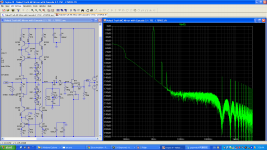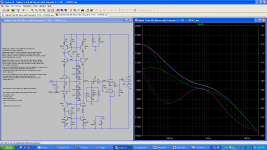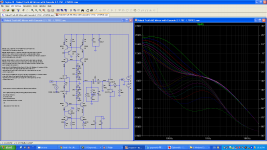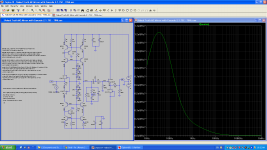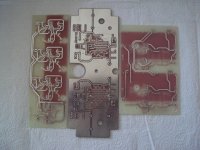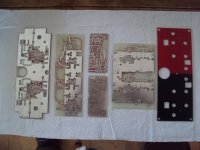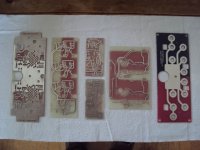I will. The town is not that pretty but the food is excellent. When i am back i do the listening.
Besides what Mister Bunga-Bunga did to Milano,
there IS many to be seen for those who manage
to get up while daylight.....😀
there IS many to be seen for those who manage
to get up while daylight.....😀
The food was great, sure. The wines even better. With Herman the German as host and Ken Kessler choosing the wines this was a nobrainer. The outstanding product was the D`Agostino Momentum. It looks much better in real then on pictures and is quite small but heavy ( 42kG a piece ). It is only 300W on 8 Ohm but pumps out more then 2000W into 1 Ohm without much feedback and a rather medium output impedance of 0.15 Ohm.
Sonus Faber had the best looking room. I felt like in a top class italian living room. The sound was very good too, especially on Vinyl with Audio Research electronics and a Bauer DPS with MOFI cart. The only problem was occasional boominess on CD that was curiously not a problem with Vinyl. Despite some setup compromises i liked the speakers best in the Onyx room. I forgot the name of that speakers but they have being designed by the omni present Joseph Szall. A 16cm NanoTech woofer and a Mundorf AMT gave a very dimensional and open sound i did not hear in the other presentations.
Sonus Faber had the best looking room. I felt like in a top class italian living room. The sound was very good too, especially on Vinyl with Audio Research electronics and a Bauer DPS with MOFI cart. The only problem was occasional boominess on CD that was curiously not a problem with Vinyl. Despite some setup compromises i liked the speakers best in the Onyx room. I forgot the name of that speakers but they have being designed by the omni present Joseph Szall. A 16cm NanoTech woofer and a Mundorf AMT gave a very dimensional and open sound i did not hear in the other presentations.
nice you had a great trip....will you have time to go back to the testing again.. would sure like to have some listening impressions on the N-jFet riaa....but I guess ample food and wine has the same effect as jet-lag...🙂
No, i am fine. I do not overdo it any more. I spend even the second evening alone in the hotel. MiiB, i swear i will build the second N-channel phono as soon as i can. I am very curious too. That P-Channel tragedy is really bugging me. I already know that it can be done with N-Channels alone. Some time ago i build an N-Channel phono ( with feedback ) that sounded rather excellent so the perspective is not that bad. By the way a nice guy, lets call him KW made a simulation of the P-N channel variety with mirror plus cascode.
That particular mirror proved to be superbly low in distortion but the output impedance was a little bit too low for textbook RIAA components. See the simulation results and also variations of the bass feedback resistor and the cap before the buffer to compensate that. Noise was low too. In the meantime i send him my anti RIAA so i await graphs that are more easy to interpret. I also designed a "cascode the cascode" variation so even Italian wine and food can not totally stop my german brain.
That particular mirror proved to be superbly low in distortion but the output impedance was a little bit too low for textbook RIAA components. See the simulation results and also variations of the bass feedback resistor and the cap before the buffer to compensate that. Noise was low too. In the meantime i send him my anti RIAA so i await graphs that are more easy to interpret. I also designed a "cascode the cascode" variation so even Italian wine and food can not totally stop my german brain.
Attachments
Salas, i see you are watching. Yes, this little B1 buffer does not seem to introduce much distortion. It´s really good actually.
Have been working with that (n-P channel)in the simms as well but have some trouble in getting it working right..can't raise the gain sufficiently. but to be honest I hope the N-channel will perform brilliantly...Your brain i not too typically German...as it seems to work in less structured and more creative manner...
More and more circuits of mine make it to a PCB. After Holger Baske has laid out the Nobrainer and Ward Maas has done the FPS i designed for the 0 issue of Linear Audio i got now the PCB boards for the L`Art du Son La Finta Giardinera. It has switchable MC-MM, one MC input is tansimpedance and one transconductance, MC inputs are switchable in loading resistance, MM input is switchable in loading capacitance. Both inputs have a second set of RCA jacks for loading customization. The EQ has the option of 50usec and 75usec.
That is because Neumann cutters had a switch for that and many records cut in Germany, for example an Esther and Abi Ofarim album i know where cut with 50usec.
We solved that many options with a modular design and timer IC´s plus micro amp relays. The switching of transimpedance to transconductance plus 50usec to 75usec is done from the front with push buttons. This stage has a dual mono PSU of my own design. Many circuit elements have being published on this thread so excuse me for not publishing the circuit diagram. I think Klaus has done a wonderful job with the PCB.
Good for him and bad for me, he is in retirement so he can do only so much. The board is etched traditionally with tin plating on copper, so no nickel plating. The tracks are delicate and round and he uses his spider web ground plane for low amount of metal.
It is star earthed and the vias are from solid copper inserts. The input jacks are directly fixed to the board and the input circuit is also on the backside, direct behind the input board. The 2 RIAA modules sit on the dual mono PSU mother board.
That is because Neumann cutters had a switch for that and many records cut in Germany, for example an Esther and Abi Ofarim album i know where cut with 50usec.
We solved that many options with a modular design and timer IC´s plus micro amp relays. The switching of transimpedance to transconductance plus 50usec to 75usec is done from the front with push buttons. This stage has a dual mono PSU of my own design. Many circuit elements have being published on this thread so excuse me for not publishing the circuit diagram. I think Klaus has done a wonderful job with the PCB.
Good for him and bad for me, he is in retirement so he can do only so much. The board is etched traditionally with tin plating on copper, so no nickel plating. The tracks are delicate and round and he uses his spider web ground plane for low amount of metal.
It is star earthed and the vias are from solid copper inserts. The input jacks are directly fixed to the board and the input circuit is also on the backside, direct behind the input board. The 2 RIAA modules sit on the dual mono PSU mother board.
Attachments
The tin plated PCBs look great (like in old HP measurement gear).
How can one do this at home ?
How can one do this at home ?
I can not tell you. My layout man also takes care handling the suppliers. He is a graphics designer and that shows. This is mostly for prototyping. In series we will use a more conventional double layer board.
The tin plated PCBs at home ?
Euh, what's wrong with a tin solution bath.
(before www1, grandpa's just bought a bottle of powder, e.g. by SENO)
